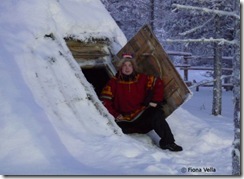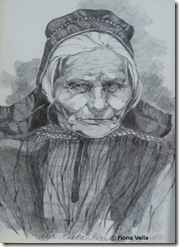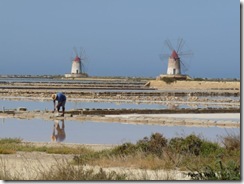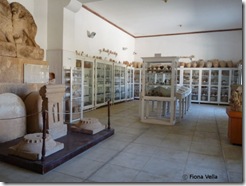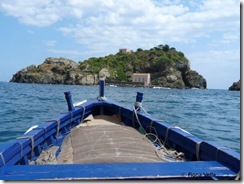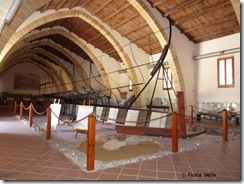Archive for May 26th, 2014
-
Discovering the Sami
The onset of spring tends to bring with it an inherent wish for renewal, a longing to experience something different, and an eagerness for a fresh start. Certainly a holiday in Lapland, Finland, wherein one could enjoy the crispness of the Arctic Circle in the company of the indigenous Sámi people may sound fantastic and surreal. However, in reality, this ‘faraway land’ is only two flights away from our islands.
There are several ways of reaching Lapland, one of which is to fly to Gatwick and then to Ivalo airport. High standard tourist resorts provide a varied choice of accommodation, whilst a wide range of activities are available according to the period of one’s visit due to the changing seasons.
In this part of the world, the spring season starts at the beginning of March and finishes at the end of April. The middle of March is renowned for offering a good possibility to observe the Northern Lights as the weather is clearer and no lights are around. During mid March, the daytime lasts for nearly twelve hours, and it stretches to sixteen hours in April, leaving ample time for many activities.
Within this remarkable landscape, one can opt to relish the opportunity to learn about the ancient indigenous Sámi culture and traditions, and to get to know better the Sámi people. Presently the Sámi population is about 75,000 and the area in which they live, stretches all the way from central Norway and Sweden, across the far North of Finland, and into the Kola Peninsula which lies in the far northwest of Russia. There are around 8,700 Sámi living in Finland and they speak three languages: Northern Sámi, Inari Sámi or Skolt Sámi. Sámi national dress varies from one region to another, identifying where the wearer’s family is from. Generally the Sámi national dress is very colourful in representation of the bright and glowing reflections and hues of nature.
The ancient Sámi believed that everything had a spirit, even space itself, and their ancient mythology was a form of nature worship. During this distant past, these people believed that only the shaman of the village community knew how to contact their divinities. The shaman communicated with these divinities through the use of a particular drum which on its surface, made of reindeer skin, portrayed life and the universe in the past, present and future.
The traditional Sámi livelihoods are thoroughly linked with nature. Fishing, hunting and the production of handicrafts are still significant activities. Yet the main economic occupation for the Sámi is surely reindeer herding. The Sámi people and reindeer have lived side by side for hundreds of years and this led to an extraordinary relationship between them. In fact, reindeer live in a state of semi-domestication as the herders take care of them during the part of the year when the climate gets too cold even for such sturdy animals or when there is not enough food in the forest to feed the entire reindeer herd. Once these difficulties are over, the reindeer are released back in the wild.
There are about 200,000 reindeer in Lapland and approximately 6,500 reindeer owner-herdsmen. The round up season of the reindeer begins after the animals’ rutting period which takes place in the latter half of October. Owners identify their herds by means of a special mark which is made on the animals’ ears. In summer the reindeer are rounded so that the calves will get the same marking as their mother. Later on, in autumn, these animals are gathered once again so that they can be counted, separated, or slaughtered. Since not all reindeer are the same, the owner will be on the look out for particular qualities in his animals. The reindeer which are more tame and strong will be chosen and trained to pull sleighs, whilst the ones with the most attractive coats and healthy characteristics will be retained in order to mate and provide the best calves. A number of others will be butchered for their meat and skins.
Reindeer have always been very important to the Sámi culture and history, and to the tourist industry. Indeed, there is rarely any waste of reindeer as the Sámi people have always been extremely resourceful and respective of nature. In fact reindeer leather is used for making clothing and accessories, hides are turned into jackets, shoes, boots, purses, cases, hats and pants, and antlers are crafted into buttons, knife handles and jewellery. Meat is prepared in several ways: salted, air-dried, warm smoked, cold smoked, roasted, boiled, fried and sauteed with butter and onions. Many of these reindeer products are found in souvenir shops, and reindeer meat can be enjoyed in restaurants, even in the form of burgers!
For those who prefer to have a closer look at the reindeer themselves, there is the opportunity to follow the practice of the round ups. Surely, throughout the years many things have changed from the traditional way of capturing these animals since technology has now introduced the use of snow-mobiles, mobile phones, electric torches and many other gadgets which increase the efficiency of this job. This does not mean that all are happy with this situation as the elders find it quite difficult to update themselves with the often changing methods. Visitors could also choose to ride a reindeer sleigh which is guided by Sámi individuals. Often this ride will also entail a visit to a reindeer farm where tourists can explore the traditional Sámi huts and taste the hot berry juice that is cooked on a fire set up in the centre of a huge tent.
The Sámi culture is also embellished with many narratives and legends and if one is lucky enough to meet a Sámi storyteller, it will definitely be a day to remember. However, small selections of books that are available in a number of shops will illustrate clearly some of the traditions of this indigenous culture. A lovely memoire of these people can be owned through distinct local artistic drawings such as those of popular Sámi artist, Merja Aletta Ranttila, in which she captures the charming allure of her people.
In order to complete this rare opportunity of observing a still thriving European indigenous culture, one must also visit Sajos, the Sámi Cultural Centre that was opened in January 2012, wherein one has the chance to capture the essence of contemporary ‘Sámi land’. Moreover, for those who are interested to delve further into the history of this ancient culture, a visit to Siida, the Sámi National Museum, is a must.
(This article was published in the Travel Section of The Sunday Times of Malta, dated 30th March 2014)
-
Separating history and myths in Italian islands
The Cyclops Archipelago in Aci Castello
The municipality of Aci Castello which is situated in the eastern side of Sicily, in the province of Catania, can guarantee a journey which could be enriched with a touch of legend, a zest of traditional religious rituals and a taste of history and archaeology.
The town itself has been developed around a Norman castle that was constructed in black lava stone in 1076 upon the foundations of an earlier 7th century Byzantine fortification. A walk through Aci Castello’s historical centre will reveal a refined baroque style architecture, whilst a stroll along its splendid crystal blue beaches will expose the area’s natural beauty.
Yet the highlight attraction of this region is the Cyclops archipelago with its odd concentration of huge volcanic rocks which have manouvered their way out from the visceral depths of the earth and projected themselves high up into the realm of Aci Trezza bay. Their mysterious allure is believed to have inspired Homer whilst he was writing his epic ‘The Odyssey’ and from then on these features became legend when he alluded that this archipelago was created when the blinded Cyclops Polyphemus threw enormous rocks at the retreating Ulysses.
Visitors can enjoy a boat ride around these spectacular rock pillars known as ‘faraglioni’ whilst it is also possible to land on Faraglione Grande which is basically an enormous basalt rock which has been turned into a religious sanctuary by the locals. A stone staircase will lead sightseers up to a statue of Our Lady holding baby Jesus which overlooks the town of Aci Castello. In early September, this particular faraglione is delightfully adorned with numerous candles which are lit at night during the feast dedicated to Our Lady. Devotees who visit this site leave rosary beads hanging on the statues’ hands, and flowers at its feet as a supplication and thanksgiving for the protection of the town. Indeed, one might be interested to know that the town of Aci Castello had to be reconstructed twice after the zone was completely destroyed by earthquakes which took place in 1170 and in 1693.
During this boat trip, one could also opt to stop over at the little island of Lachea which lies only a few metres away from the faraglioni. Here, one can visit a museum which exhibits collections of flora, fauna and archaeological artifacts which have been retrieved from this island.
In order to preserve this valued environment, in 1989, the Cyclops archipelago together with Lachea island were established as a protected marine reserve.
Motya and the natural reserve of Stagnone in Marsala
Another exceptional route is located in Marsala which is situated off the west coast of Sicily, in the province of Trapani. Here one can travel back in time and experience the history of the ancient island of Motya and that of its devoted escort – the lagoon of Stagnone.
Back in the 8th century BC, it was the Phoenician colonizers who named the island as Motya. At the time, this small stretch of land with an area of 400,000 square metres was unattractive and inhospitable, and yet these intrepid colonizers succeeded to turn it into one of the most powerful cities of that period, particularly by using its natural resources.
In fact, the Phoenicians set up to build numerous basins in which to collect salt, and started to export this valuable commodity all over the Mediterranean. Moreover, apart from obtaining a good supply of fish from the Stagnone lagoon, they exploited its fertile under-water habitat by coming up with an ingenious way of extracting a purple dye from murex shells with which they coloured textiles and demanded good money for them.
Due to its strategic position along the trade route, Motya often found itself involved in the power struggles among the various empires which wanted to possess Sicily and therefore, high defensive walls were constructed around the island in order to offer it better protection. However this small domain ended in the 4th century BC when Motya was attacked and completely destroyed by warriors who came from Syracuse.
Later on, in the medieval period, this island offered refuge to a number of friars who renamed it San Pantaleo, and it was only in the end of the 19th century, when the name Motya appeared again. This took place when a British tradesman, Joseph Whitaker, whose family was renowned for the production of Marsala wines, took ownership of this island and he came upon some archaeological remains of the ancient city. Whitaker took the responsibility to finance extensive archaeological excavations on this island and he even built a museum on it in order to exhibit some of the artifacts that were unearthed.
Nowadays, Motya is the property of the NGO Whitaker Foundation and it is open for public viewing. The old-fashioned Whitaker museum is a gem for history enthusiasts and it is definitely worth a visit before seeing the rest of the island. Meanwhile, if one decides to walk around the island, it is advisable to apply an insect repellent since many insects are attracted to this area due to the still waters of the nearby lagoon. A walk along Motya’s archaeological remains will manifest significant structures which pertain to different eras, including a tophet which is located at the far end of this island. This sacred ground overlooking the sea is believed to be a cemetery wherein the remains of small sacrificed children used to be buried in small urns after they were offered by the Phoenicians to their god, Baal Hammon.
Since 1984, the Stagnone lagoon has been designated as a nature reserve of special interest and it has become one of the prominent itineraries of this zone. A salt museum which has been set up in a 300-year old saltworkers’ house explains the old practice of collecting salt and exhibits an array of various specialist tools. Moreover, visitors will definitely be enchanted by the presence of numerous old windmills which are scattered among the vast expanse of salt pans that are still in use.
During the day, regular boat trips take visitors across the shallow waters of the Stagnone lagoon and over to the island of Motya. However, one may prefer to enjoy a romantic tour during sunset when the lagoon area absorbs the lovely colours of the sky and all the salt pans turn to a gorgeous pink hue.
Archaeological Museum of Baglio Anselmi in Marsala
It is believed that the nearby city of Lilybaeum (modern Marsala) was originally set up by some of the inhabitants of Motya who had managed to escape during its downfall.
Lilybaeum acted as a naval military stronghold of the Carthaginians but in the 3rd cetury, when it became a Roman colony, its economy prospered even more. Nonetheless these areas seemed to be destined to a short existence, and in the 5th century this city was attacked and crushed by the Vandals.
One can trail the fascinating past of this region by visiting the archaeological museum of Baglio Anselmi in Marsala. The site provides a rich collection of archaeological remains which have been recovered both from the area of ancient Lilybaeum and also from the island of Motya.
Undoubtedly, the main attraction of this museum is the wreck of a Punic warship which was reclaimed from the sea after it was discovered in 1969 in an area called Punta Scario in the harbour of Marsala, near the Aegadian Islands.
(This article was published in the Travel Section of The Times of Malta on Sunday dated 25th May 2014)
Travelogue
Archives
Recent Posts
- A MATTER OF FATE
- MALTA’S PREHISTORIC TREASURES
- THE MAGIC IS IN THE DETAIL
- THE SELLING GAME
- NEVER FORGOTTEN
- Ġrajjiet mhux mitmuma – 35 sena mit-Traġedja tal-Patrol Boat C23
- AN UNEXPECTED VISIT
- THE SISTERS OF THE CRIB
Comments
- Pauline Harkins on Novella – Li kieku stajt!
- admin on IL-KARNIVAL TRAĠIKU TAL-1823
- Albert on IL-KARNIVAL TRAĠIKU TAL-1823
- Martin Ratcliffe on Love in the time of war
- admin on 24 SENA ILU: IT-TRAĠEDJA TAL-PATROL BOAT C23

